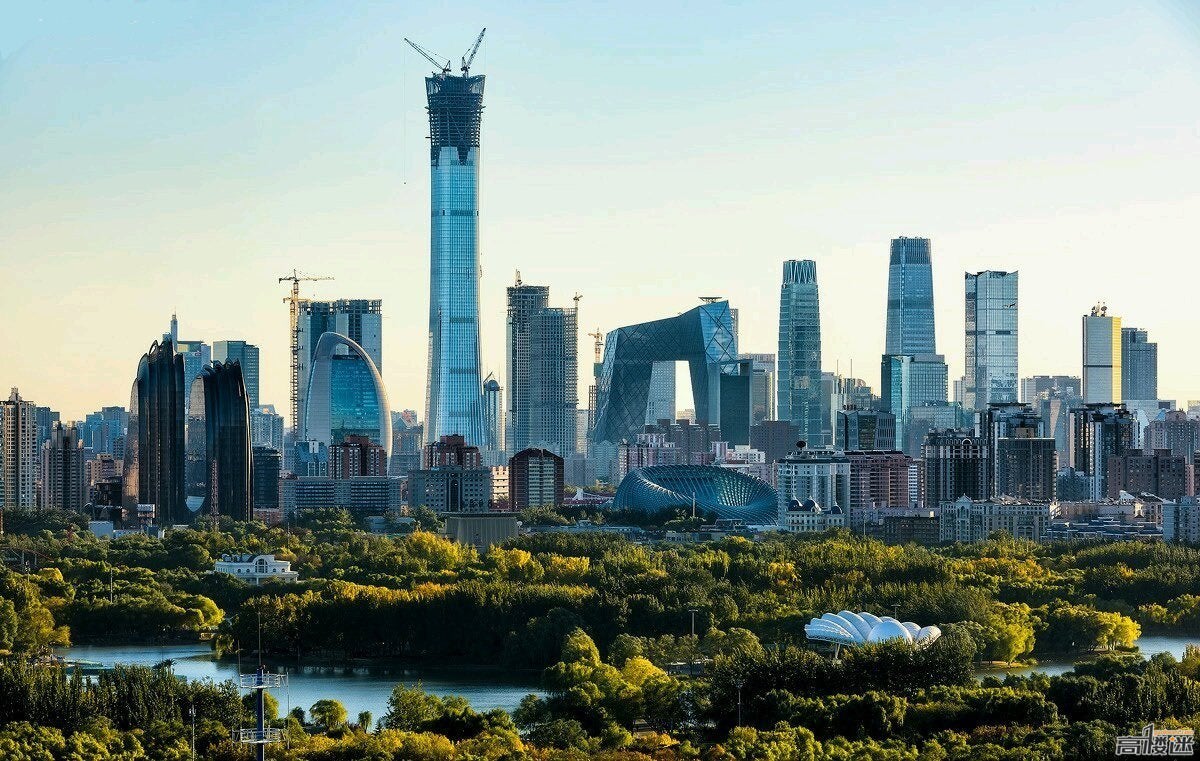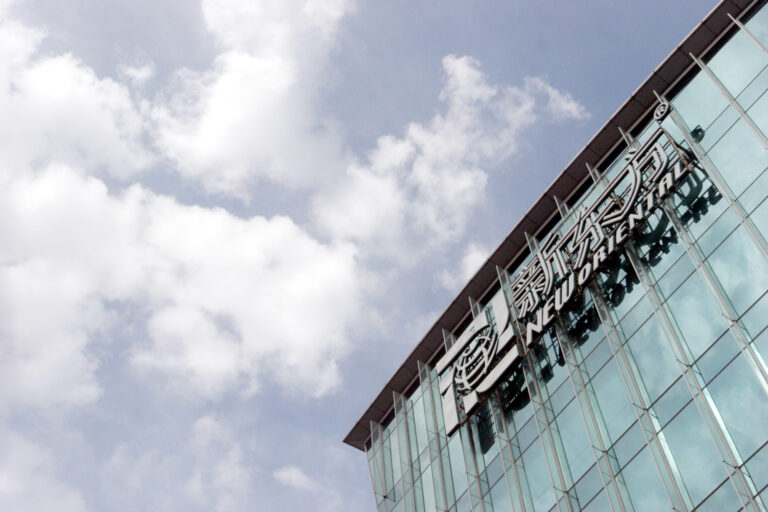What foreign companies need to know about the economy of Beijing
As the capital city of the most populous nation on Earth, Beijing plays an important role in China’s economy. With a consumer base of more than 20 million, Beijing has become more and more important for foreign companies in many industries. For anyone looking to the Middle Kingdom as a business opportunity, it is essential to understand the workings of Beijing’s economy.
Measured by purchasing power parity (PPP) Beijing’s GDP was worth just over $1 trillion in 2019, about the same as that of the Philippines. Compared to the Philippines’ 100 million citizens however, Beijing’s population of 21 million enjoys a larger share of this economic productivity, with GDP per capita (PPP) of roughly $46,000. By this measure, Beijing’s economy is the most highly developed of administrative divisions in China, outranking even Shanghai. What’s more, this figure has been growing at roughly the same pace as the national economy for the past few years, which is roughly 6%. With such high levels of economic productivity, it is impressive that Beijing’s economy can still grow at this rate.
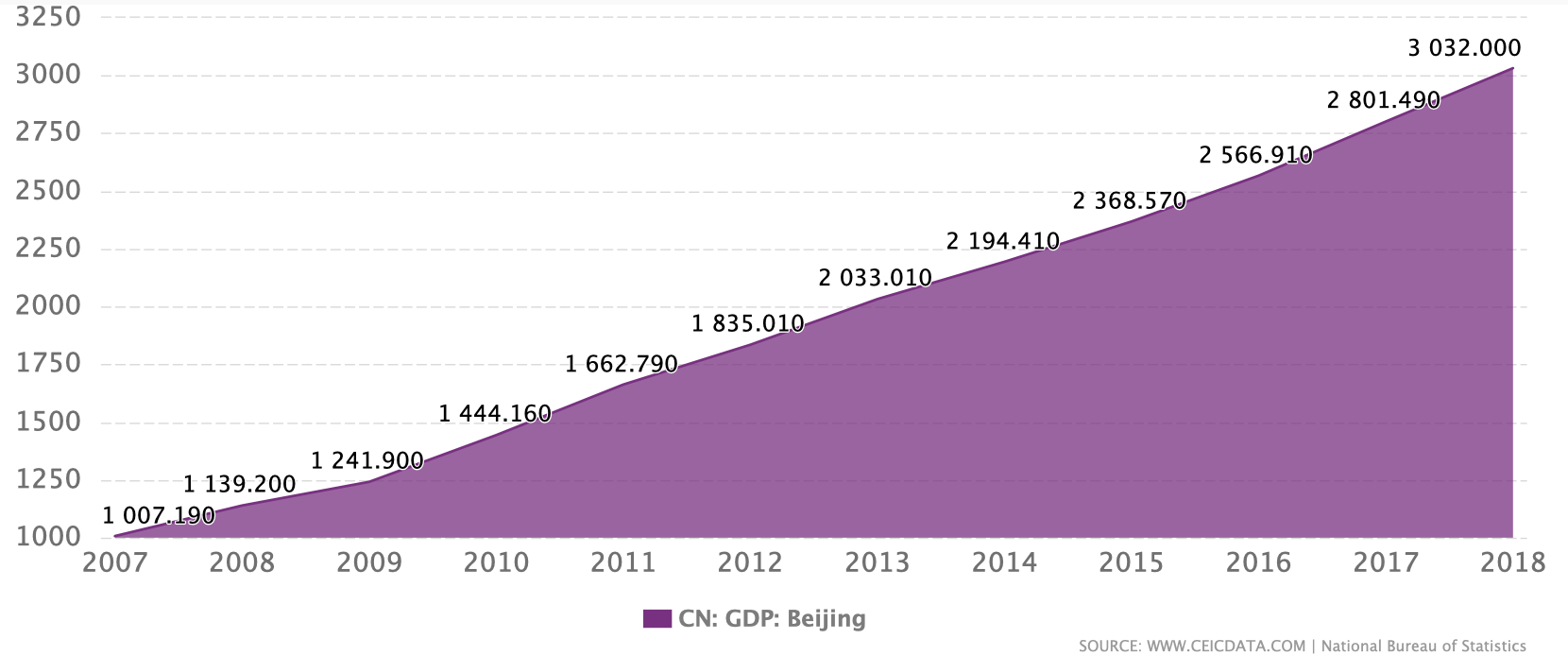
[Between 2007 and 2018, Beijing’s GDP (PPP) more than tripled, while the city’s population grew from about 14 million to over 21 million. The increase in population and GDP is a boon to Beijing’s economy. Source – National Bureau of Statistics.]
Beijing’s economy is a magnet to foreign companies
With one of the largest and most highly developed economies of any Chinese city, Beijing has been a powerful magnet for foreign companies since China opened up to global market in the late 1970s. Over the past forty years, the city has attracted the attention of countless multinational companies lured by the promise of China’s market. These companies have enjoyed the fruits of China’s economic success, which have seen the city’s nominal GDP more than double in size between 2010 and 2018, from 1.4 to 3 trillion RMB.
In 2019, it was reported that the number of foreign companies in Beijing’s Guomao district alone amounted to over 10,000. These companies added 60 billion yuan to the city’s tax revenues in 2018. Notable foreign companies with a large footprint in the city include Sony, IBM, Samsung, Shell, Nestle, Volkswagen, Ford and Hewlett-Packard. The list of foreign companies reaping the rewards of Beijing’s economy continues to expand.
Beijing’s economy is not one that any company can thrive in however. In order to better understand the economy of Beijing, foreign companies must examine it from a few different perspectives, including its role as a national IT & electronics hub, its importance as a financial center and its position at the top of the country’s education hierarchy. In addition, foreign companies should keep in mind the role the 2022 Winter Olympics will play in the city’s economy, how infrastructure spending is helping the city grow and how tourism is lifting the fortunes of the city. Finally, it is also worth noting the role that a burgeoning pharmaceuticals industry will have on the city’s expanding economy.

[Zhongguancun, China’s answer to Silicon Valley, at the beginning of its rapid development as an electronics market in the 1980s. Source – Springer Link]
Beijing’s IT & electronics sectors have propelled Beijing’s economy
After rising to importance as an electronics market in the 1980s, Zhongguancun has become one of China’s most important IT neighborhoods. Located in the northwestern part of the city near Peking University and Tsinghua University, the neighborhood has contributed to the IT industry of Beijing and that of China for decades now.
Frequently referred to as “China’s Silicon Valley,” Zhongguancun has fostered the development of many household names in China’s IT sector, such as Lenovo, JD.com, ByteDance (which owns TikTok,) Didi Chuxing and Kuaishou. In addition to these domestic heavyweights, Zhongguancun has seen the opening of many branches of international IT companies, such as Google, Motorola, MySpace, Sony and Microsoft.
According to Xinhua, the more than 22,000 high-tech companies in Zhongguancun brought in revenue exceeding 5.8 trillion yuan in 2018. Venture capital in China, some of which has flowed into Beijing’s IT sector, surpassed $100 billion in 2018. Seen in this light, the neighborhood is of utmost importance to the economic fabric of the city. In recent years, the success of Zhongguancun has fueled a surge in startup firms in the city. As the area has become an incubator for the tech scene, it has seen the rise of startups such as ByteDance and Didi Chuxing. In addition, Beijing is home to 82 unicorns, startups that are worth more than $1 billion. This number exceed that of even The San-Francisco Bay area, which is only home to 55.
What foreign companies should know about Beijing’s IT sector
For foreign companies eyeing Beijing’s IT sector, it is important to recognize Zhongguancun’s important role as a catalyst for the nation’s IT scene. When looking to Beijing as a potential IT market, it is worth noting the Zhongguancun’s highly integrated network of IT know how and specialization, especially in conjunction with the district’s proximity to the nation’s top universities. Finally, it is worth noting the local government’s generous treatment to the IT industry, which sees payments of loan interest and other preferential policies.
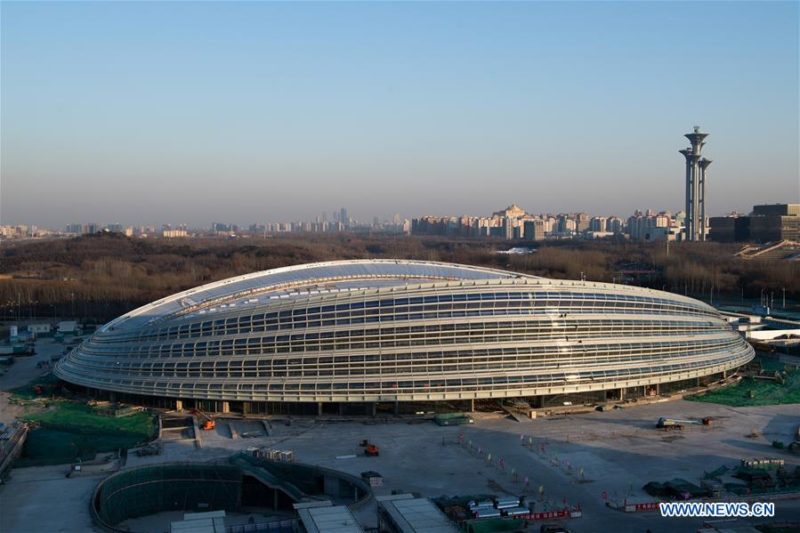
[Beijing’s newly constructed National Speed Skating Oval, located in the Olympic Green to the north of the city center, will be one of the only newly constructed venues in preparation for the 2022 Winter Olympics. Source – Xinhua.]
2022 Winter Olympics will be add a temporary boost to Beijing’s Economy
In 2015, China was chosen as the host of the 2022 Winter Olympics, with Beijing and Zhangjiakou in nearby Hebei province being the two main places with venues for the games. Being the only city in the world to host both the summer and winter Olympics, Beijing’s economy has profited handsomely. Preparations for the games include renovations of existing venues in central Beijing and the construction of Olympic Villages and other venues in Yanqing District as well as Zhangjiakou in nearby Hebei province. In addition, new transportation upgrades will open leading up to the games, including a new high-speed rail connecting Beijing and Zhangjiakou.
The first time Beijing held the Olympics in 2008, the city was transformed by massive projects to improve the image of the city. While spending on infrastructure and venues in preparation for the 2022 winter games is less than a tenth of what was spent in 2008, there will certainly be economic benefits associated with holding the Olympics.
Benefits of hosting the Olympic games
Not only will Beijing’s economy enjoy a boost in infrastructure spending and construction jobs in the lead-up to the 2022 Winter Olympics, but it is also projected that the city will benefit from increased recognition in an increasingly competitive world. While studies find that hosting the Olympic Games doesn’t directly benefit city or national economies as much as expected, the 2022 Winter Olympics will likely benefit the city in terms of increased revenues from tourism, increased socioeconomic benefits from the network effects of expansions to the city’s transport system and from the legacy of rentable sporting venues across the city. In addition, sales of winter sports equipment in China and related travel may grow significantly due to the games.
Foreign companies looking to profit from the upcoming winter Olympics in Beijing would do well to note the nature of profitability during Olympics Games. While some sectors will only benefit leading up to the games, others will only benefit during or following the games. Other sectors however may enjoy a continuous surge in profits, such as the winter sports industry.
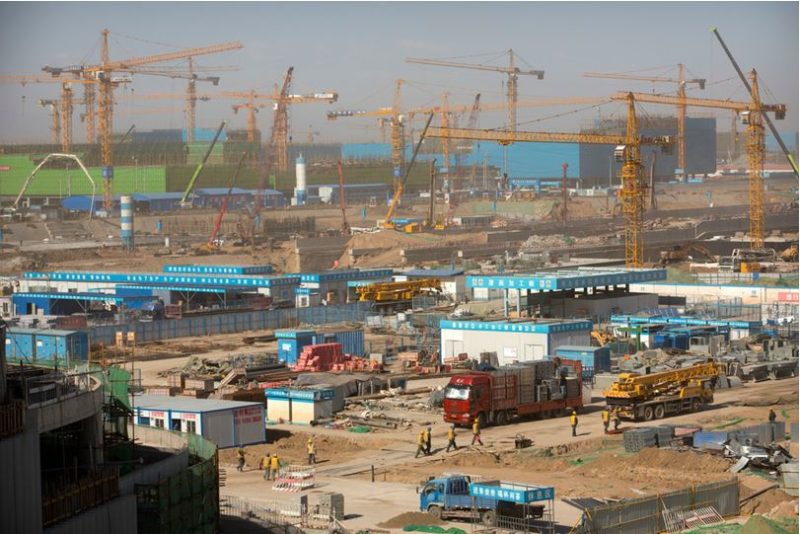
[A view of construction cranes dominating the horizon on the outskirts of Beijing. Source – NYTimes]
Large infrastructure projects in Beijing continue to fuel the city’s growth
The expansion of Beijing Capital Airport in the leadup to the 2008 Olympic Games in Beijing saw it increase dramatically in size and passenger throughput. In 2012, Ecquants Analysis estimates showed that the airport contributed $6.5 billion to the city’s economy yearly, which has most likely grown considerably since. In comparison, Dubai International Airport, which has a similar passenger level and size as Beijing’s Capital Airport, has an impact of $26.7 billion. This discrepancy points to the potential PEK’s economic contribution has as the city’s economy continues to mature over the coming decades.
Furthermore, Beijing’s recently constructed Daxing Airport points to further economic benefits. The airport opened in 2019 as a way to relieve congestion at the recently expanded Capital Airport and to increase aircraft capacity in Beijing. Projected to be able to handle more than 100 million passengers per annum, the airport easily more than doubles the city’s aviation capabilities. With further expansions planned to add additional capacity to Daxing Airport, the city’s combined aviation capacity will make it one of the busiest cities in the world when it comes to air traffic.

[Map of completed and under construction Beijing metro lines. By 2024, the Beijing metro is scheduled to open hundreds of new miles of track, significantly increasing the network. Source – Ran & Hat600]
Boasting one of the largest and busiest metro networks in the world, the Beijing Metro is on track to expand its reach even further in the coming years. With a current total of 700 kilometers, the city has announced plans to expand this figure to 1,000 kilometers by the end of 2021. A study published in 2015 show that new metro stations are likely to lead to a quadrupling of real estate value in the vicinity. With hundreds of new metro stations under construction, Beijing’s real estate markets are poised to witness great changes in value.
The first suburban rail network in China
In addition to the city’s rapidly expanding metro network, Beijing is also in the process of planning and constructing a suburban rail network, the first of its kind in China. With four lines currently in operation and four more schedule to opening this year, the network will add connectivity to new areas of the city as well as add new connections within Beijing, such as line 4, which will connect Beijing’s two airports when it opens.
Aside from the High-speed rail connection between Beijing and Zhangjiakou’s 2022 Winter Olympic Venues, Beijing is also working on other high-speed rail lines that will connect the city with neighboring regions. The long-awaited Beijing-Harbin high-speed rail line will open in 2020, connecting Beijing’s new Xinghuo Station to Harbin via Chengde, Chaoyang and Shenyang. In addition, an intercity high-speed rail line will connect another newly opened train station in Tongzhou, to Tangshan in neighboring Hebei province. Lastly, a third new high-speed rail line connecting Beijing to the newly constructed Beijing airport and Xiongan City.
While Beijing’s ever-increasing strain on and ambitious projects in infrastructure reflect those of the country as a whole, it is still worth noting how the city’s projects are transforming the city. Foreign companies would do well to note how ambitious transport and infrastructure projects will decentralize the city and expand connectivity in the suburbs. Moreover, it is worth realizing that expansion of high-connectivity transport stations farther out from the city center will increasingly prop up land value.
Beijing’s Financial Sector as a major drive in the city’s economy
Located directly west of the Forbidden Palace in the middle of the city is Beijing Financial Street, which is a neighborhood of high-rises containing many of the city’s financial firms. Shanghai was historically the financial hub of China, but Beijing’s standing as a worl financial center has risen in recent years.
Beijing’s financial services, business environment and reputation have improved. Beijng’s financial sector now ranks seventh worldwide, behind Hong Kong and ahead of San Francisco. The increase in ranking will only serve to strengthen the city’s role as a major financial sector and attract more attention from global markets.
The new Lize Business District
The design and construction of Lize Business District in Beijing’s less-affluent Haidian District signals a shift away from the city center. In response to insanely high office rents in the Guomao and Jinrong Street financial districts in the city center, the city of Beijing began demolition and constructing this area in 2010. With more than 400 companies having already set up shop in the new business district and many new office buildings opening up, the district will add a competitive edge to the city’s financial sector. Plans for a new metro station with a direct link to Daxing Airport give the new financial district an edge over Jinrong Street and Guomao.
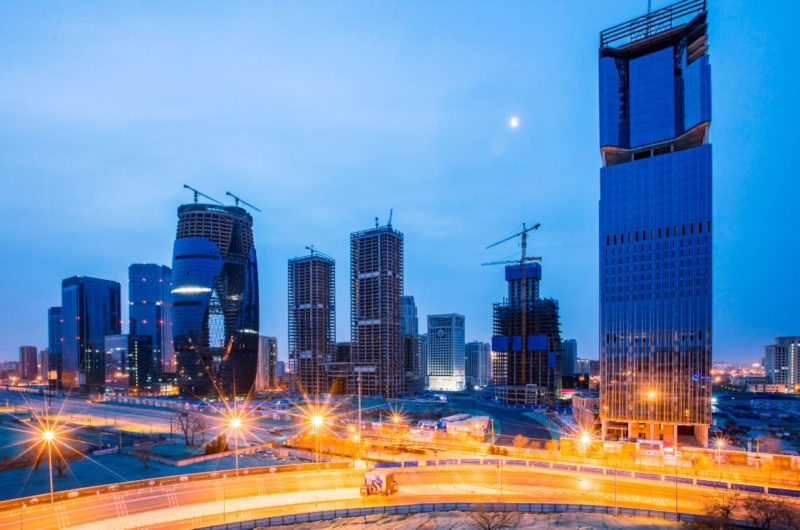
[Beijing’s Lize Financial District in full construction. The new district is predicted to add substantially to the Beijing’s financial sector with more than 5 million meters2 of office space in the pipeline. Source – China Daily]
In recent years, local governments across China have opened up pilot programs offering rewards to companies that set up shop in China. One such scheme was announced in Beijing in 2019, which offers rewards to international foreign institutions that open up in the city. Foreign companies that would do well to keep these incentive packages in mind when looking to Beijing. In addition, they should keep in mind the shift in financial power towards Lize Business District in the southwest part of the city.
Tourism in Beijing still a major driver for the capital city’s economy
As the capital not only of modern China, but also of many dynasties throughout the nation’s history, Beijing is dotted with multiple historical sites that serve as tourist attractions to domestic and international tourists alike. With famous landmarks like the Forbidden Palace, the Temple of Heaven and the Summer Palace, Beijing’s tourism industry has a lot going for it. In addition, the city is located near the Great Wall, which is one of the most well-known tourist attractions in the world.
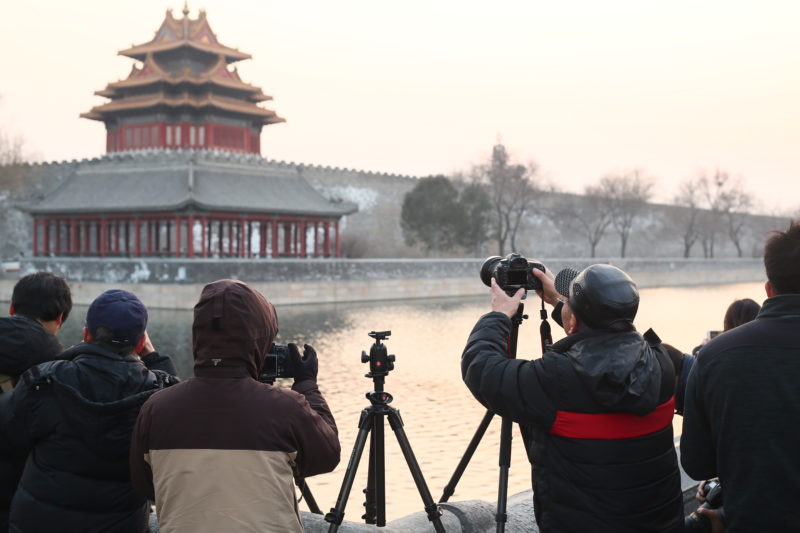
[Tourists and photographers snap pictures of the sunset behind the Forbidden Palace. One of the most visited tourist attractions in China, the palace welcomed 14 million visitors in 2019. Source – 睿睿 ]
Beijing home to niche tourist sites
Despite falling numbers of overseas tourists, the city of Beijing has seen in increase in domestic tourism coupled with a steady increase of revenue from tourism, which amounted to about 600 billion yuan in 2018. Besides being a magnet for tourists hoping to visit ancient sites of significance, Beijing is also beginning to attract a new kind of tourist. Camping on the Great Wall has become a new form of niche tourism. The Great Wall Marathon has also turned into a tourist attraction in itself, with people coming from all over the world not only to participate, but to spectate. As the largest city near the Great Wall, Beijing is the start-off point for Great Wall excursions.
In addition to a growing industry of niche tourism, the opening of Universal Studios theme park in nearby Tongzhou in 2021 will further add to the city’s tourism industry. Scheduled to be complete by May 2021, the park will be the first of its kind in China and the third in Asia. With a price tag of over $3 billion, the new theme park is certain to attract a wave of tourists.
Foreign companies looking at Beijing’s tourism industry should keep in mind the changing nature of the industry, which is catering more towards domestic tourists than overseas. In addition, it is important to keep in mind that not all tourists coming to the capital city are solely for the main tourist attractions.
Beijing’s Education Industry
As the capital of China, Beijing has amassed not only economic and political clout, but also has become one of the most important centers of education in the nation. In 2018, more than 230,000 students graduated from the city’s ninety-two universities, while more than 80,000 foreign students studied at universities in the city, the largest number of any Chinese city.
With such high levels of prestige, Beijing’s Education Industry can benefit foreign companies in the city by offering up one of the most competitive and highly-skilled markets in the nation.
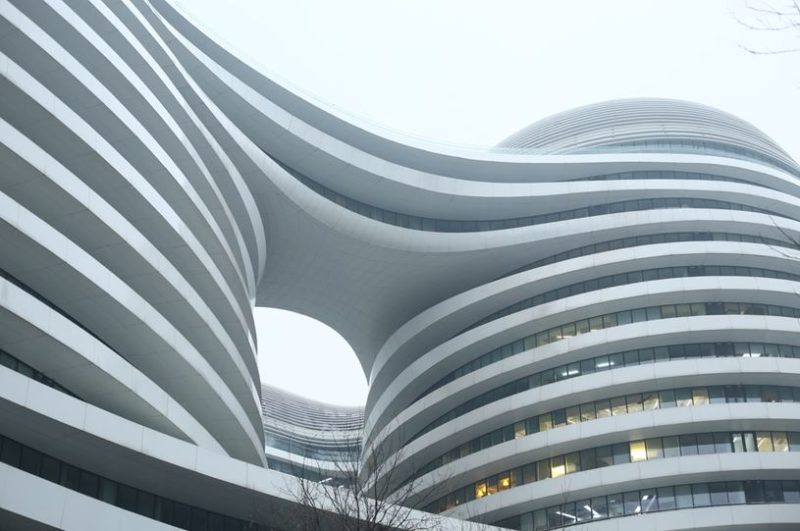
[View of Galaxy Soho headquarters in Beijing. Swanky new offices and company headquarters have been opening up across the city over the past twenty years. Source – 睿睿 ]
Up and coming: Beijing’s Pharmaceuticals Industry
With the establishment in 2010 of the Beijing Economic-Technological Development Area in Beijing’s southeastern suburb Yizhuang, the city’s pharmaceutical industry has gained more and more traction. Yizhuang Biomedical Industry Park, another effort led by the city of Beijing, has also helped the city’s pharmaceutical industry expand. The proximity of these two areas to each other and across town from the IT hub of Zhongguancun and the country’s top universities have given rise to a virtuous cycle of recruitment and R&D.
Beijing’s Pharmaceuticals Industry in Yizhuang has given rise to many new companies, such as BeiGene, a biotechnology company that is leading the way in the industry. Others, such as the household name Tong Ren Tang Medicine Company, have done well with the government policies that favor the industry in Yizhuang, opening a new plant in the district in recent years.
The pharmaceutical industry in Beijing has access to talent
Foreign companies in the pharmaceutical industry looking to China should pay attention as the city’s newly successful pharmaceutical industry takes off. Worth keeping in mind is the proximity of this highly successful pharmaceuticals haven to China’s top universities, a juxtaposition that will only lead to more success in coming years.
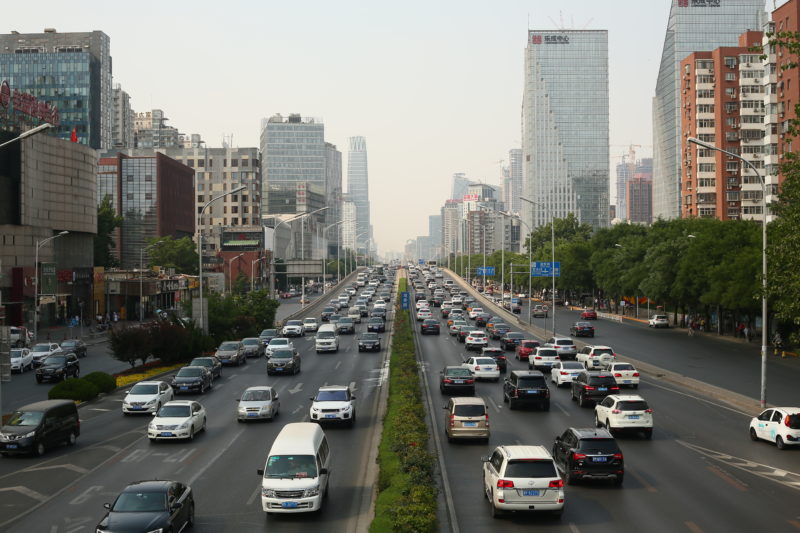
[A view of Beijing’s Third Ring Road during evening rush hour, dwarfed by high-rise offices on both sides. With seven ring roads and a dense network of expressways crisscrossing the city, Beijing is one of the most highly connected cities in China. Source – 睿睿]
Takeaway for Foreign Companies
When it comes to the economy of Beijing, the most important things for companies to understand are how the city’s role as the capital affects its economy in a positive way and how the city’s policies favor the growth of certain sectors. Watching tech developments in Zhongguancun and financial markets in Lize will assist companies trying to understand the city’s steady rise. Understanding how big infrastructure projects are going to push the center of the city of outwards and rent upwards in the coming years will also help foreign companies when decided how to enter the city’s market. Finally, it is worth keeping an eye on Beijing’s pharmaceutical industry as it becomes a heavyweight in the industry.
As always, foreign companies need to keep in mind the changing nature of China’s economy, especially in light of recent closures due to the outbreak of the novel coronavirus. It is only natural that certain sectors stand to gain from the situation and other certain sectors stand to lose. Due to the city’s importance in China however, its economic comeback will be swift.
Author: Cameron Carlson
Listen to China Paradigm, the China business podcast


